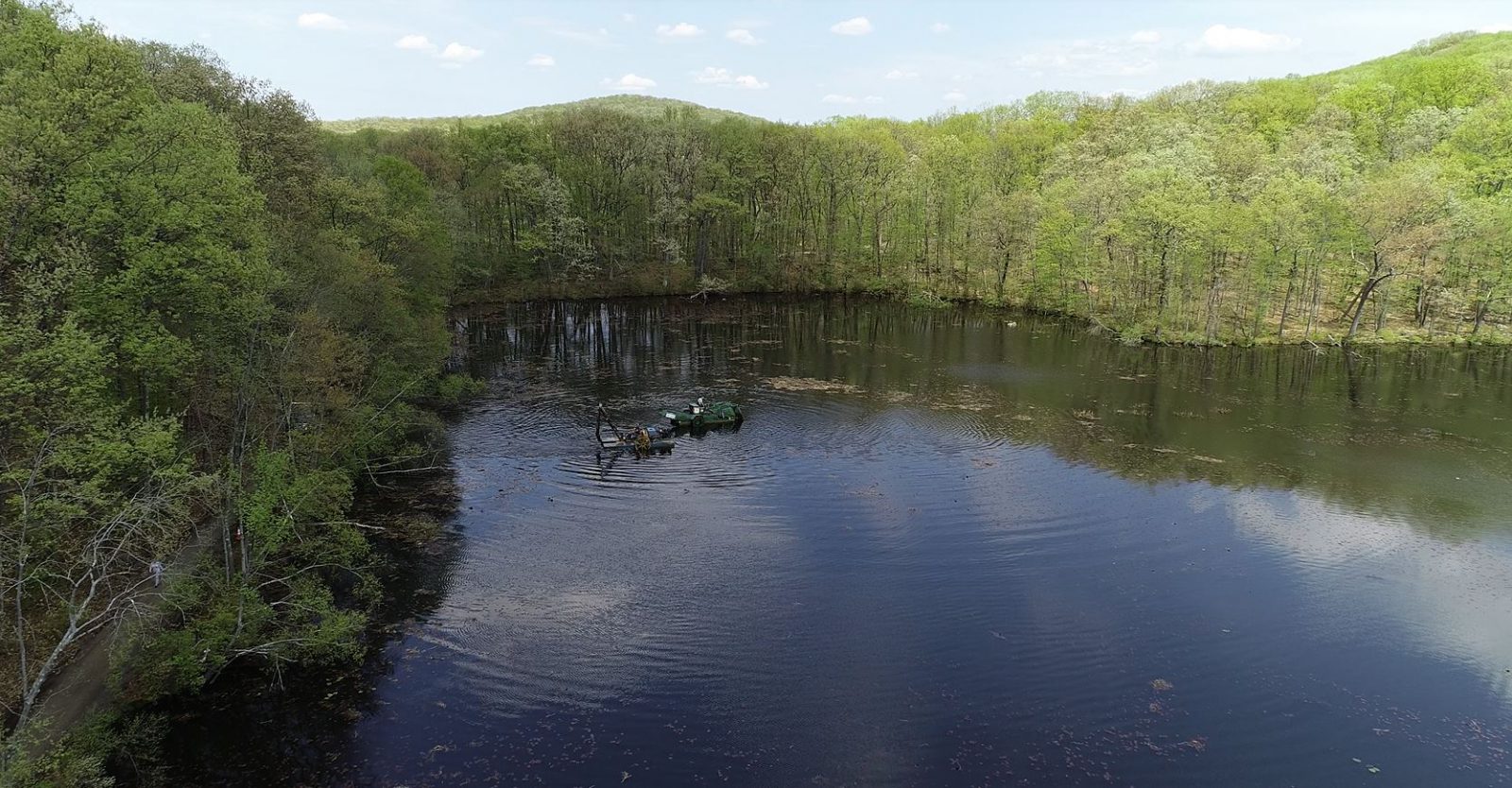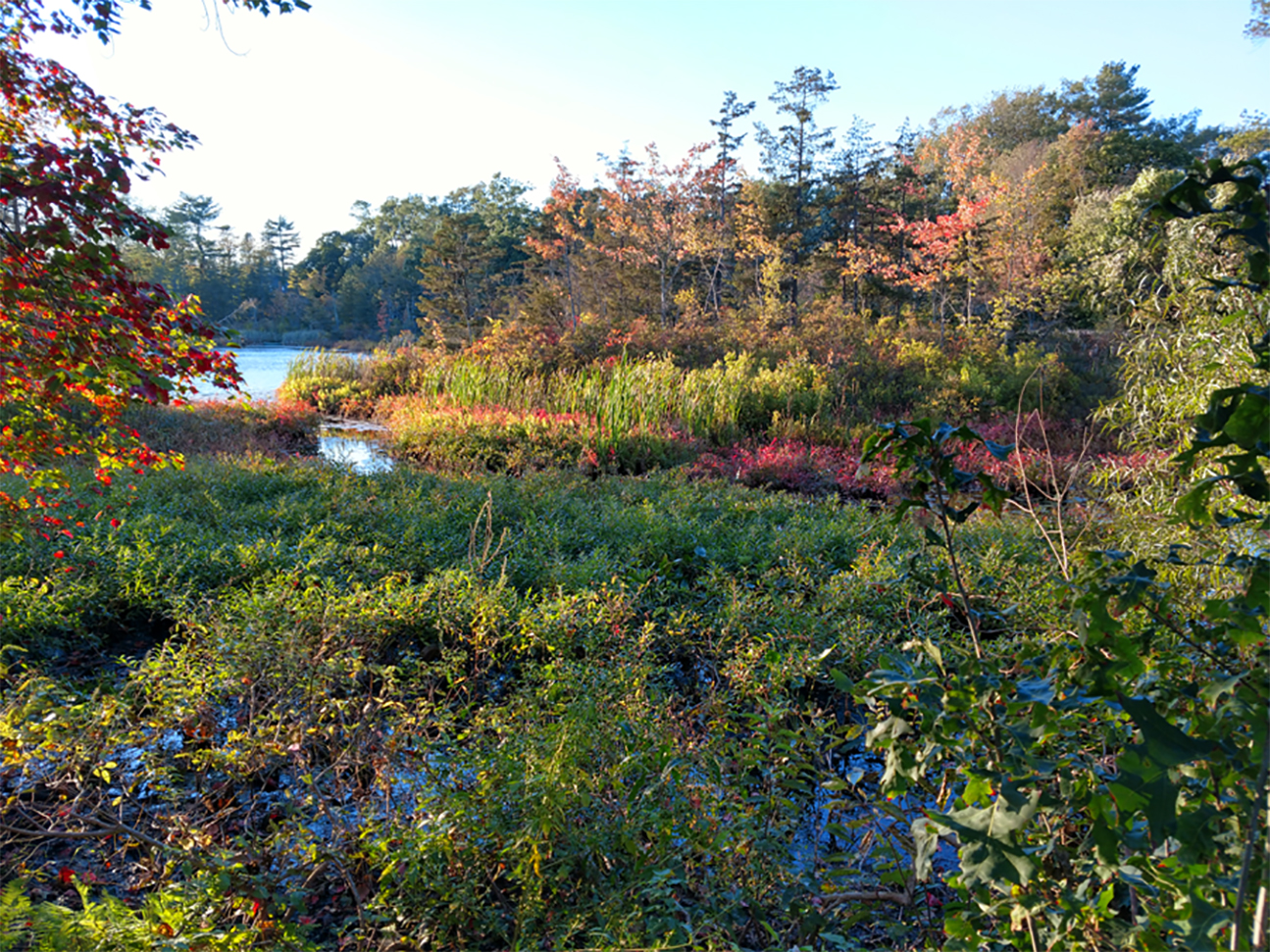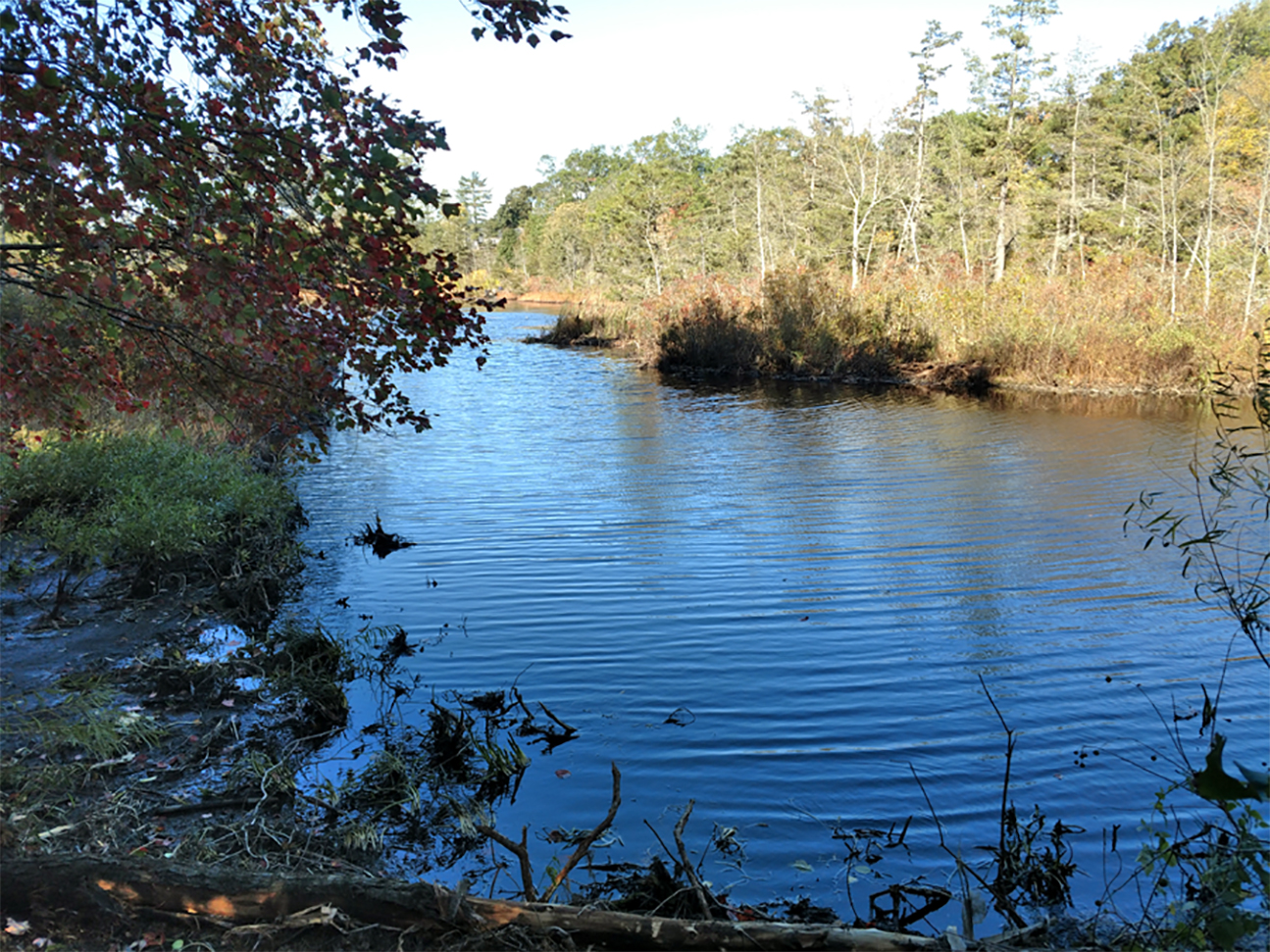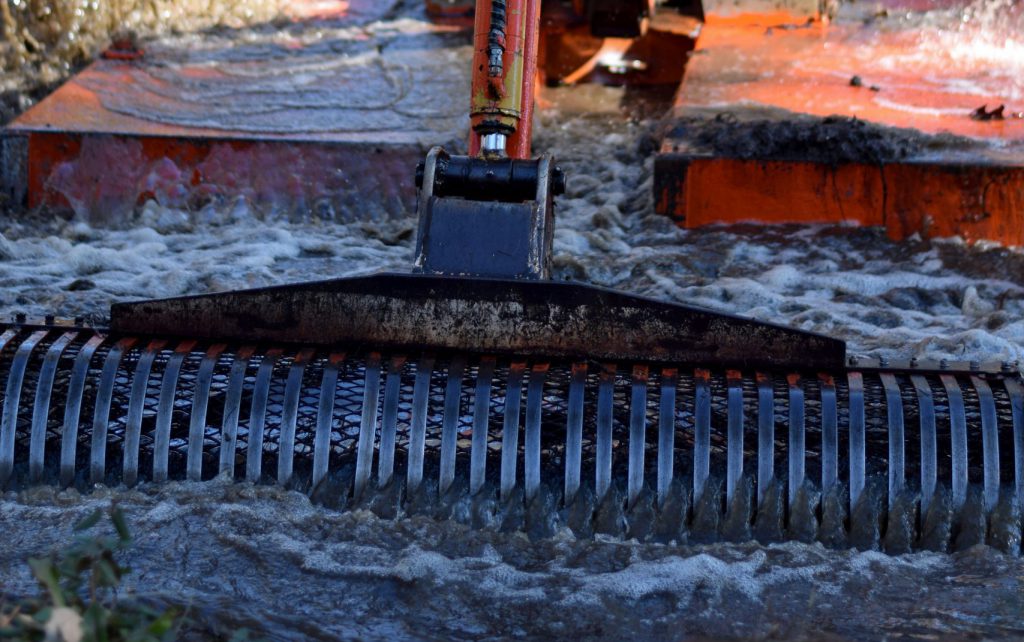
Site Description
Location: Webster, MA
A 4.2-acre pond located within the western section of a 1,400-acre lake in Webster, MA, is a valuable resource for the surrounding community. The pond has historically served as a direct inlet into the lake, with a culvert connecting the pond to the watershed. It is used by surrounding residents for kayaking, wildlife viewing, and fishing.
- Invasive Weed Removal


Scope of Work
Over time, the water connectivity between the two waterbodies was halted due to an accumulation of nuisance emergent vegetation and organic matter buildup along the pond side of the culvert. Several factors led to these issues, including shoreline erosion and excessive nutrient loading as a result of stormwater runoff and human impact.
The community opted to utilize hydro-raking for the restoration of water flow and depth. This solution was chosen because of the machine’s limited environmental impact and dynamic maintenance capabilities. A hydro-rake is essentially a floating barge on which is mounted a backhoe with several rake attachments of different sizes and functions. The hydro-rake can operate in water as shallow as 1.0-1.5 feet and can remove nuisance vegetation and bottom debris from water depths ranging from 18 inches to 10 feet. Hydro-raking was also favored as a budget-friendly alternative to costly dredging, which eventually becomes required to maintain all waterbodies if other sediment management strategies are not proactively utilized.

Project Description
The overall objective of the restoration program was to remove several feet of accumulated organic matter in a 0.5- acre section of the pond, as well as emergent vegetation such as rushes, buttonbush, and cattails to maintain open water habitat, water flow, and desirable water quality. Other benefits of the hydro-raking restoration program include reduced odors, improved boating, and fishing lanes, and shoreline preservation.
In the fall, a hydro-rake was deployed to the designated area of the pond culvert. The hydro-rake removed the organic matter, emergent vegetation, and associated rhizomes. The materials were then offloaded into the bucket of a front-end loader and placed in dump trucks to be transported to a local composting facility. Due to the proximity of the offloading location, the SOLitude team was able to efficiently remove a large amount of material in a relatively short timeframe.
The project was extremely successful and the management efforts took a total of six days. 600-yards of material were removed, restoring three feet of depth within the pond, as well as the flow to the lake. Removing three feet of organic matter from the bottom of the waterbody also helped to restore available habitat and reduce eutrophication, or aging, of the pond.
The community was so pleased with the results that they made additional plans to hydro-rake another side of the culvert, which was severely hindered by organic matter build-up and dense vegetation.









